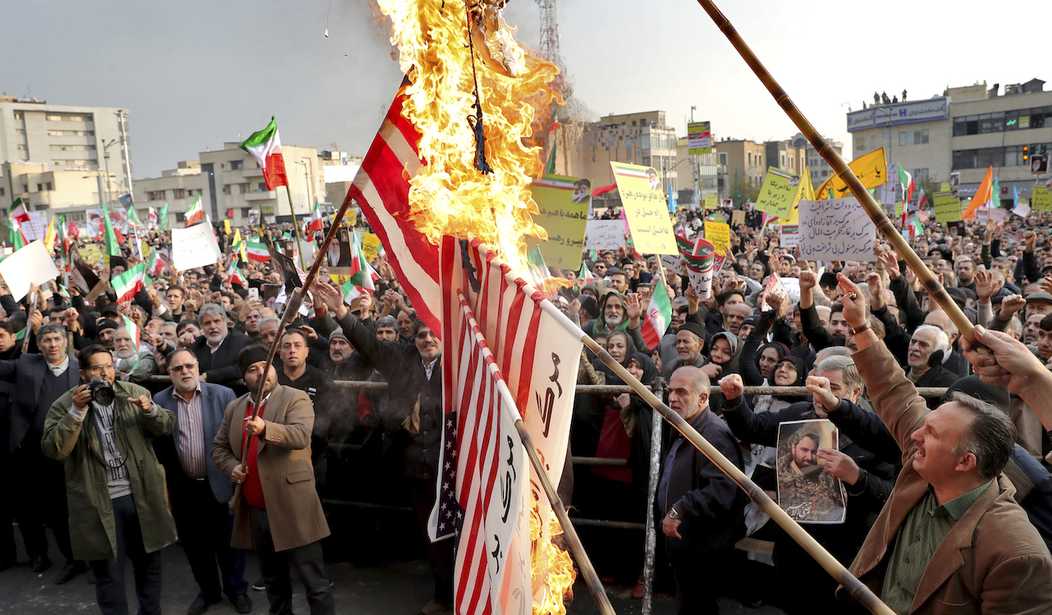Then the anger of the Lord will be kindled against you, and he will shut up the heavens, so that there will be no rain, and the land will yield no fruit, and you will perish quickly off the good land that the Lord is giving you.
— Deuteronomy 11:17
Mother Nature may accomplish something that neither the U.S. nor Israel could ever have contemplated: the evacuation of Tehran's 9.7 million inhabitants. Iran is currently experiencing its fifth consecutive year of drought, and the autumnal rainfall is about a quarter of that in 2024, that would be two millimeters. In short, Tehran is facing a "Day Zero" catastrophe. "Zero day" is probably shortly after January 1.
Masoud Pezeshkian, Iran’s president, warned on Thursday that if the drought persisted more than a month longer, “we’ll have to evacuate Tehran.” Mr. Pezeshkian has not explained how such an evacuation would be managed.
Mr. Pezeshkian has warned about Tehran’s water crisis for months, and has even promoted moving the capital south, closer to the Persian Gulf, where there is “access to open waters.”
The Amir Kabir Dam, once a vital lifeline holding over 160,000 acre-feet, now languishes at a mere 8 percent capacity, or about a two-week supply for Tehran. In terms of reservoir capacity, isn’t huge. It is about the size of the Canyon Dam on Texas’s Guadalupe River or the Smith Mountain Dam on Virginia’s Roanoke River. But when you plop it down in the middle of the desert and make your nation’s capital and a lot of your agriculture dependent on it for water, it takes on a significance all its own. The other reservoirs in the five-dam system that supplies Tehran with water — Latyan, Lar, Mamloo, and Taleqan — are in equally poor condition. At Latyan, only half of the current 10 percent fill can be used. Lar is at one percent, Mamloo at seven percent, and Taleqan, which is about twice the size of Amir Kabir, is at 30 percent capacity.
The water crisis in Iran:
— Dr. Fundji Benedict (@Fundji3) November 7, 2025
An Iranian swimmer filmed a video in which he showed how it is possible to walk across the water reservoir of the Karaj Dam (Amir Kabir Dam), which serves as the main water source for Tehran – something that indicates the low water level in the… pic.twitter.com/St8Ycnagko
Iran is drought-prone; indeed, it is the middle of the most severe drought in 57 years, but that isn’t what is causing the current crisis. It is the logical and foreseeable outcome of decades of environmental neglect and Soviet-style mismanagement that has turned a naturally arid climate into a national emergency.
Iran’s groundwater has been depleted, primarily in an effort to surge agriculture to deal with a booming population. Tehran is sinking at a rate of 25 cm per year as the aquifers collapse. This poses a threat to utilities, subways, and the structural integrity of buildings. It is hard to imagine that the settling hasn't caused leaks in water mains.
To be clear, this is not a Tehran problem; this is an Iran problem. The drought affects the whole country, and 30 of Iran’s 31 provinces are experiencing land subsidence due to unchecked groundwater extraction.
Iran is also heavily reliant on hydroelectric power. As you can imagine, that isn't going all that well.
The hydropower sector is reeling, with over 12,500 megawatts of capacity affected. “As temperatures rise, electricity production becomes increasingly unstable due to the country’s energy imbalance and lack of investment in renewable infrastructure,” she said. “There is no solution right now except widespread compliance with consumption guidelines.”
[Somayeh Rafiei, a member of the environmental faction in Iran's parliament], said the situation requires the Ministry of Energy and provincial governors to immediately implement real-time monitoring across all public institutions and government-affiliated companies, including mandatory installation of smart meters and online tracking systems.
“We cannot demand conservation from ordinary citizens while leaving high-consumption government bodies unchecked,” she said.
The capital began scheduled power outages again this week, according to a notice issued by the Tehran Electricity Distribution Company, following unannounced outages in neighboring towns.
The return of outages coincides with a heatwave that has sharply driven up water usage.
It is statistically unlikely that Tehran will get enough rain to provide potable water to nearly 10 million people, not to mention water for other purposes. The evacuation of Tehran will not be the end of it. We're looking at the physical collapse of a country on a scale not witnessed in modern history. With this collapse will come the Mother of all Refugee Crises and the probable fall of the current government and perhaps a splintering of Iran into smaller states. Interesting times.
After more than 40 days of screwing Americans, a few Dems have finally caved. The Schumer Shutdown was never about principle—just inflicting pain for political points.Help us report the truth about the Schumer Shutdown. Use promo code POTUS47 to get 74% off your VIP membership.













Join the conversation as a VIP Member